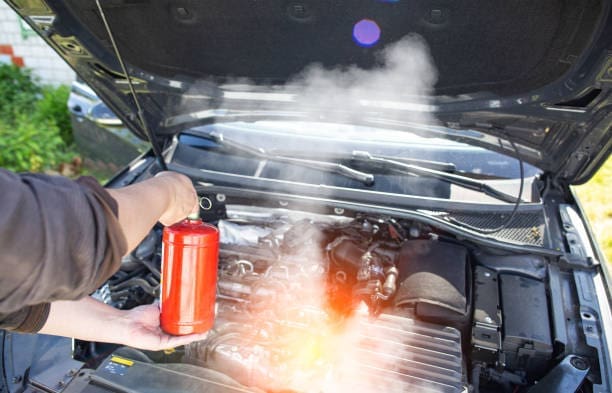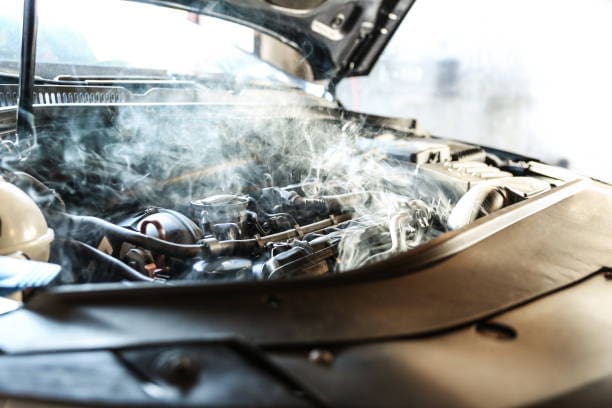Preventing Car Overheating Car overheating is a common issue that can cause significant damage to your vehicle if not addressed promptly. Understanding the causes of overheating and taking preventive measures can help you avoid costly repairs and ensure your car runs smoothly. This article provides comprehensive advice for drivers on how to prevent car overheating.

Understanding Car Overheating
Table of Contents
ToggleWhat Causes Car Overheating?
Car overheating occurs when the engine temperature rises beyond the optimal operating range. Several factors can contribute to this problem, including:
- Coolant Leaks: The most common cause of overheating is a lack of coolant due to leaks in the radiator, hoses, or water pump.
- Malfunctioning Thermostat: A thermostat that is stuck closed can prevent coolant from circulating properly, leading to overheating.
- Faulty Water Pump: The water pump circulates coolant through the engine. If it fails, coolant flow is disrupted, causing the engine to overheat.
- Clogged Radiator: Dirt, debris, and corrosion can clog the radiator, reducing its ability to dissipate heat effectively.
- Failed Radiator Fan: The radiator fan helps cool the engine by drawing air through the radiator. If it fails, the engine can overheat, especially in slow-moving traffic.
- Low Oil Level: Engine oil helps to dissipate heat. Low oil levels can lead to increased friction and overheating.
Symptoms of an Overheating Engine
Being aware of the signs of an overheating engine can help you take immediate action to prevent damage. Common symptoms include:
- High Temperature Gauge: The temperature gauge on your dashboard shows a higher-than-normal reading.
- Warning Lights: The engine temperature warning light may illuminate your dashboard.
- Steam: Steam coming from under the hood is a clear sign that your engine is overheating.
- Strange Smells: A sweet smell (coolant) or a burning odor can indicate overheating.
- Reduced Engine Performance: An overheating engine may lose power and perform poorly.
Preventive Maintenance
Regularly Check and Maintain Coolant Levels
Coolant is essential for regulating your engine’s temperature. Regularly check the coolant level and top it up as needed. Ensure you use the correct type of coolant for your vehicle. It’s also important to check for leaks in the cooling system and repair them promptly.
Inspect and Replace the Thermostat
The thermostat regulates the flow of coolant through the engine. Over time, it can become stuck or fail. Regularly inspect the thermostat and replace it if necessary to ensure proper coolant circulation.
Maintain the Radiator
The radiator is crucial for dissipating heat from the engine. Regularly clean the radiator to remove dirt, bugs, and debris that can block airflow. Check for signs of corrosion and leaks, and replace the radiator if it’s damaged.
Check the Water Pump
The water pump is responsible for circulating coolant through the engine. Inspect the water pump for leaks and listen for unusual noises, which can indicate a failing pump. Replace the water pump according to your vehicle manufacturer’s recommendations.
Ensure the Radiator Fan is Functioning
The radiator fan helps cool the engine by drawing air through the radiator. Check that the fan operates correctly, especially when the engine is running hot or the air conditioning is on. Replace a faulty fan to maintain proper cooling.
Monitor Oil Levels
Engine oil not only lubricates but also helps dissipate heat. Regularly check the oil level and top it up if necessary. Change the oil and oil filter at the recommended intervals to ensure optimal engine performance and cooling.
Driving Tips to Prevent Overheating
Avoid Heavy Traffic
Sitting in heavy traffic for extended periods can cause your engine to overheat due to reduced airflow through the radiator. If possible, avoid peak traffic hours or take alternative routes with less congestion.
Use Your Air Conditioning Wisely
Running the air conditioning puts extra strain on your engine and can contribute to overheating. If your engine temperature starts to rise, consider turning off the air conditioning to reduce the load on the engine.
Keep an Eye on the Temperature Gauge
Regularly monitor the temperature gauge on your dashboard while driving. If you notice the temperature creeping up, take action immediately to prevent overheating. Pull over to a safe location, turn off the engine, and allow it to cool down.
Drive at Moderate Speeds
Driving at high speeds for extended periods can cause your engine to overheat, especially in hot weather. Maintain moderate speeds and avoid aggressive driving to keep your engine temperature in check.
Use the Heater
If your engine starts to overheat, turning on the heater can help dissipate some of the heat from the engine into the cabin. While it might be uncomfortable, it can be an effective temporary solution to lower the engine temperature.
Emergency Measures When Your Car Overheats

Pull Over Safely
If your engine overheats, pull over to a safe location as soon as possible. Continuing to drive with an overheating engine can cause severe damage.
Turn Off the Engine
Turn off the engine to allow it to cool down. Do not open the hood immediately, as the steam and hot coolant can cause burns. Wait until the engine has cooled down before inspecting it.
Check Coolant Levels
Once the engine has cooled, check the coolant level. If it’s low, add coolant or water to the reservoir. Never add cold water to a hot engine, as this can cause the engine block to crack.
Look for Leaks
Inspect the cooling system for visible leaks. Check the radiator, hoses, and water pump for signs of damage. If you find a leak, you may need to call for roadside assistance or have your car towed to a repair shop.
Restart the Engine Carefully
After adding coolant and allowing the engine to cool, restart the engine and monitor the temperature gauge. If the engine continues to overheat, turn it off and seek professional assistance.
Long-Term Solutions
Upgrade the Radiator
If you frequently drive in hot climates or under heavy loads, consider upgrading to a high-performance radiator. These radiators have better cooling capacity and can help prevent overheating.
Install an Auxiliary Cooling Fan
An auxiliary cooling fan can provide additional airflow through the radiator, especially in slow-moving traffic or during off-road driving. This can be a valuable upgrade to keep your engine cool.
Use High-Quality Coolant
Invest in high-quality coolant with a higher boiling point and better heat transfer properties. This can improve your cooling system’s efficiency and reduce the risk of overheating.
Regularly Service Your Vehicle
Regular maintenance is key to preventing overheating. Follow your vehicle manufacturer’s recommended service schedule and have your cooling system inspected by a professional. Address any issues promptly to avoid overheating problems.
Consider a Coolant Additive
Coolant additives can improve the heat transfer properties of your coolant, helping to keep your engine temperature in check. Consult with a mechanic to determine if a coolant additive is suitable for your vehicle.
Conclusion
Preventing car overheating is essential for maintaining your vehicle’s performance and longevity. By understanding the causes of overheating, performing regular maintenance, and adopting smart driving habits, you can reduce the risk of engine overheating and avoid costly repairs. Keep an eye on your car’s cooling system, and address any issues promptly to ensure a smooth and trouble-free driving experience.



